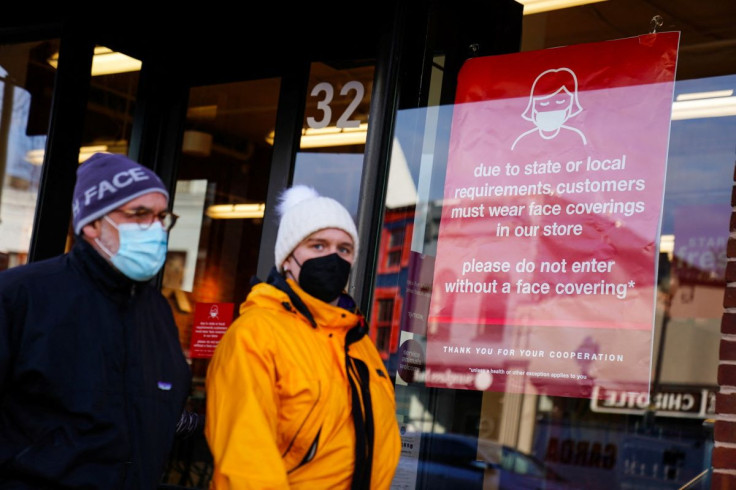U.S. Eases COVID Indoor Mask Guidelines For Most Of Country

The U.S. Centers for Disease Control and Prevention (CDC) on Friday dramatically eased its COVID-19 guidelines for masks, including in schools, a move that means 72% of the population reside in communities where indoor face coverings are no longer recommended.
The new masking guidelines shift from a focus on the rate of COVID-19 transmission to monitoring local hospitalizations, hospital capacity and infection rates.
Under the prior guidelines, 95% of U.S. counties were considered to be experiencing high transmission, leaving just 5% of U.S. counties meeting the agency's criteria for dropping indoor mask requirements.
"We're in a stronger place today as a nation with more tools to protect ourselves and our community from COVID-19," CDC Director Rochelle Walensky said during a media briefing on Friday.
She cited the availability of vaccines and boosters, broader access to testing, the availability of high quality masks and the accessibility to new treatments and improved ventilation.
"With widespread population immunity, the overall risk of severe disease is now generally lower," Walensky said.
The moves come as the wave of coronavirus infections caused by the easily spread Omicron variant subsides substantially in the United States and states such as New Jersey have announced plans to lift indoor mask mandates for schools and other public places in the coming days.
The new policy is broken down into three categories - low, medium and high risk - based on hospital capacity and cases.
It advises people in medium-risk communities who are at increased risk of complications from the disease, such as those with compromised immune systems, to ask their doctors if they should be wearing a mask.
With the pandemic now in its third year, many Americans have tired of wearing masks. In addition, studies have shown that for vaccinated people, infections from the Omicron variant were less severe and less likely to cause hospitalization and death than previous versions of the coronavirus.
Travelers will still need to wear masks on airplanes, trains and buses and at airports and train stations. Those requirements expire on March 18, and the CDC will revisit them in the coming weeks, Walensky said.
The new guidelines apply regardless of vaccination status.
Dr. Amesh Adalja, in infectious disease expert at the Johns Hopkins Center for Health Security, said the changes made sense given transmission rates in the United States are high, but hospitalization rates remained low.
"Focusing on hospital capacity is a much better metric and has always been the overriding concern," he said in an email.
The CDC said universal school masking would now be advised only in communities with a "high" level of COVID-19. The earlier recommendation advised masking in schools no matter the level of COVID transmission.
"We need to be flexible and to be able to say we need to relax our layers of preventive measures when things are looking up," Walensky said. "And then we need to be able to dial them up again, should we have a new variant, during the surge."
The CDC has come under fire for changes in its stance on masking. Last spring, Walensky told vaccinated Americans it was safe to take off their masks indoors in low transmission areas, but reversed course a few months later when it became clear that fully vaccinated people could transmit the virus.
In an interview with Reuters earlier this month, Walensky said "now is not the time" to remove masks in schools after announcements by officials in New Jersey, Connecticut, Delaware, California and Oregon that they planed to lift indoor mask mandates for schools and other indoor spaces.
© Copyright Thomson Reuters 2024. All rights reserved.





















